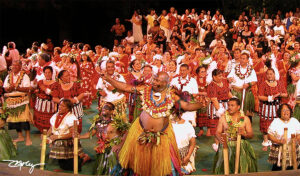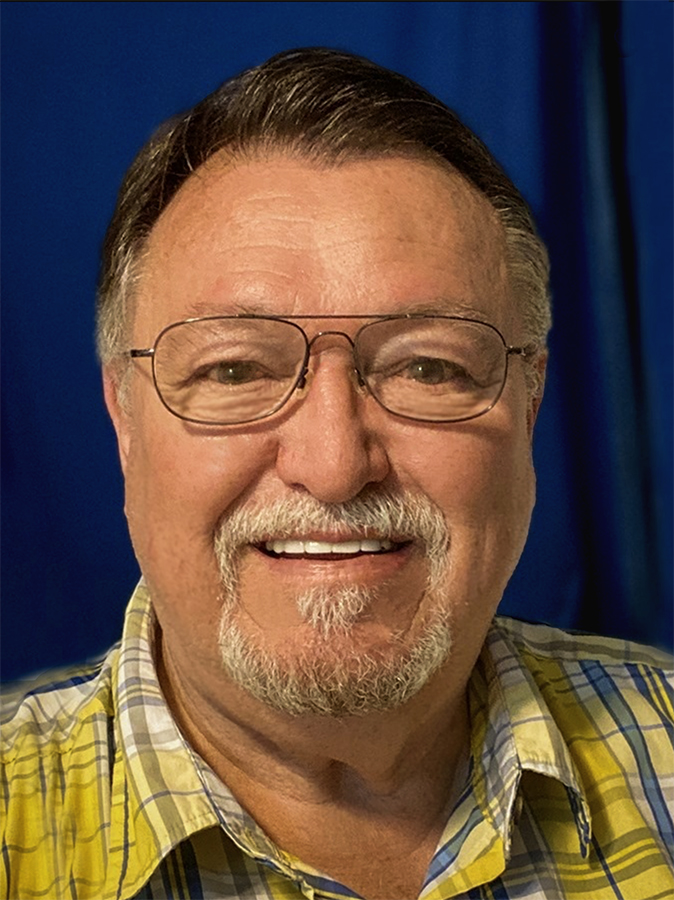
Emosi Damuni (in front), as he had done many times during the regular night show over the previous nearly 40 years, led the Polynesian Cultural Center’s 40th-anniversary alumni night show cast in singing the PCC signature song, Bula Laie. [Photo by Mike Foley]
[Excerpted (with minor editing for continuity) from a BYU–Hawaii oral histories interview, 22 Oct 2003: Asked what it was like working at the Center in its earliest days, Damuni said he arrived on May 2, 1964]:
When I first arrived here with my family, we were not members of the Church, but [referring to Tausilinu’u David Hannemann] through the example that he set and the rest of the Church members that worked here, that convinced me that I am in the right place at the right time to seek for eternal progression for my life and the life of my family.
…This place is just like my village. I built it and I raised my kids here. I sent my children on their missions through working here at the Cultural Center. [He also agreed this is a place that “changes people’s lives.”]
[Working at the PCC] was one of the most important parts of my life. I spent half my life here at the Cultural Center as well as my wife [Sereima Damuni]. When we were asked to come …through the invitation of my cousin [Ratu Isireli Racule], the first Fijian to come here, I accepted — even though it was a sacrifice. …In Fiji if you’re a schoolteacher or a nurse, you’re in the right place because you can support your family and send your children to school.
But I resigned from there, as well as my wife. …We accepted the invitation, and we came here as non-members. …We worked here all the time. I left the Center for a while performing in town, but my wife
stayed here all her life …until she retired with me. I told people …when they asked me, “How did you manage to know the way to treat the kids?” I said, “To work here at the Cultural Center was just like teaching.”
When we were teaching at home in Fiji, we prepared a workbook:… It said introduction, body of the lesson, and conclusion.
That was the same thing we did here at the Cultural Center. When a guest came into the Center, the ‘introduction’ …was to greet them at the gate and brief them about the village.
Then …we took them to a demonstration area where they learned more about the culture of Fiji [i.e., the ‘body’].
The ‘conclusion’ of the program …was usually the number-one thing. But that was not the number-one purpose of the Cultural Center. The …Center was built to help our students from the South Pacific.
President David O. McKay saw that building this place would help the people of the isles of the sea to come here, work, and earn their way through school.
You’d be surprised how many students have gone through this place.

Your comment has been submitted for administrator approval.
Your comment was not saved. Please try again.
No comments yet.